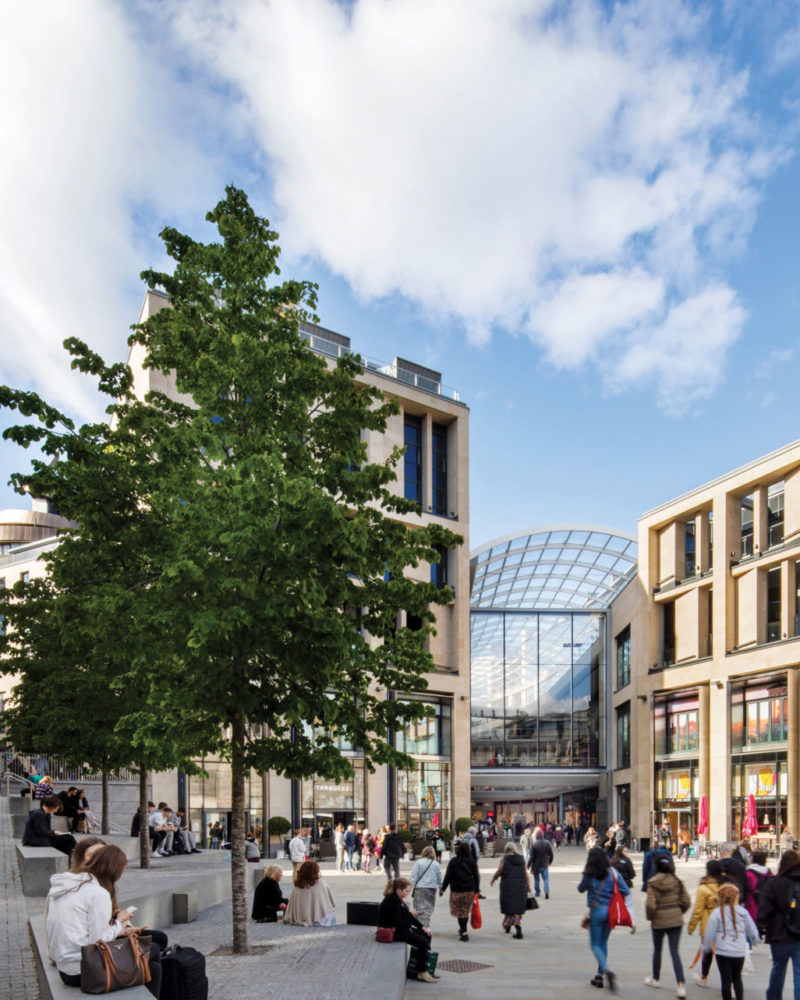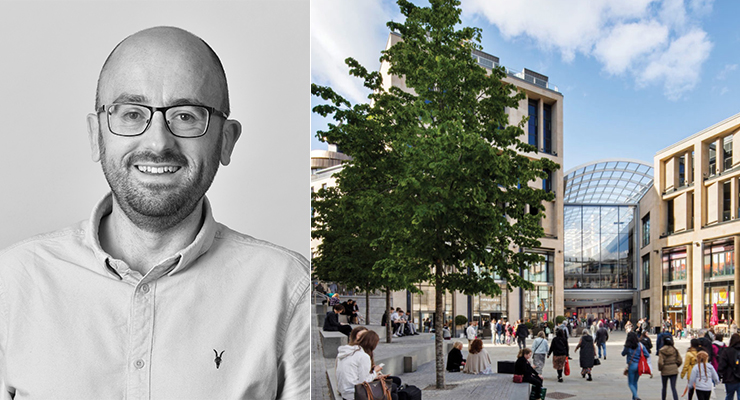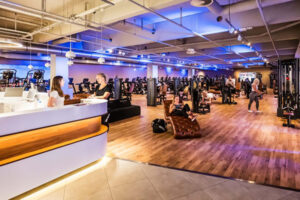Mixed-use developments face two main challenges. Firstly, the challenge of design, as the different uses have very different architectural requirements, and secondly, the challenges of business strategy. The different uses have different and often conflicting needs in terms of space, environment, brand, and ambience. As a result, many developers simply subdivide larger projects into smaller parcels with a single use, explains Andrew McVicker, Director at Pragma Consulting. “Although technically a ‘mixed-use’ development – as the larger plot accommodates a range of uses – such a design negates the benefits of true mixed-use, namely the increased turnover and value that can be created by different audiences using the same space.”
Beyond the challenge of accommodating the different design requirements of various uses in a single space, McVicker and his team believe the biggest holdback to creating true mixed-use projects is the inability to truly understand the various requirements of different user groups and how a project can – or in some cases, cannot – meet their combined needs. That’s why Pragma has developed a proven strategy to optimize the chances of succes mixed-use projects. These are some of the highlights.
Identifying Success Criteria
Although mixed-use developments are home to multiple uses – typically retail, food and beverage, leisure, grocers, offices, residential, and hotels – not all uses are equal. Priority is given to those uses that have the greatest potential to meet the development’s success criteria.
“As a rule, direct income is the most important success criterion, but there are a variety of success criteria that need to be taken into account when prioritizing uses,” explains McVicker. Uses that generate the most direct income now are not necessarily the ones that will generate the most income in the future. Financing that is available for some uses may not be available for others. In addition, some uses that generate little direct income themselves may be crucial when it comes to generating the awareness, footfall, or brand positioning that can establish a development over the long term and inhibit future competition, potentially protecting future value. “It is crucial for developers to clearly establish their success criteria as early as possible, as they will have a fundamental impact on the uses selected, the quantum of space required for each, and the physical layout of the scheme – all things that are difficult to change further down the line,” states the report.
“Success criteria should not be vague, but measurable – what rents are being targeted, what uses and occupiers can deliver those rents, what mix of uses, positioning, and environment are required to attract those occupiers, how feasible is the creation of that offer given the existing and planned competition, how could the offer be changed or optimized to reflect that, how might performance expectations change accordingly, and is the business plan for the development still coherent? All too often, developers start work on a project without a clear idea of what success will look like, or fail to update their vision as plans for the project evolve. That can lead to an inefficient process at best and, at worst, projects that are flawed from the ground up before they are even built.”
The Failure To Identify And Act On Success Criteria
There are numerous examples in which the failure to identify and act upon success criteria has led to either a focus on short-term gains, missed opportunities to enhance and/or protect long-term asset value, and/or total collective inertia – to the detriment of assets, investments, and more. McVicker cites the example of UK town centers, where this is true of the vast majority of assets, and contrasts this with the Paya Lebar mixed-use development in Singapore, developed by LendLease in 2019, which he describes as one of the best mixed-use areas in the world.
Understanding An Audience
Demand as well as existing and planned competition impact the selection of success criteria and, therefore, the uses chosen for a mixed-use scheme. In terms of audience, Pragma typically distinguishes between “captive audiences” and “catchment audiences”, whereby “captive audiences” have a reason to be on site regardless of the available commercial provision, whereas “catchment audiences” must actively choose to visit a development. Neither segment is inherently “better” – captive audiences are easier to attract, while catchment audiences generally offer higher overall spend potential. Within these segments, different users have their own characteristics: Residents bring high spend potential, footfall throughout the day/week, and a sense of ownership and identity to a scheme; workers bring significant lunchtime and after-work spend potential – particularly in the hospitality and leisure sectors – and hotels can provide both a high volume of business guests, which boosts food and beverage turnover potential, and holiday guests, who are often already in “spend mode”. Crucially, such generalizations need to be fully explored, proven, disproved, quantified, and developed in order for them to be successfully applied to defining opportunities for success and determining commercial strategy.
Sizing an audience can be done relatively quickly and robustly and forms a crucial building block of success criteria and strategy. Pragma utilizes best-in-class data providers, such as Experian, which utilizes census data and aerial photography to create population counts, demographic and spend profiling of 250 m grid squares for the majority of countries across the globe. Industry standards in workspace per worker allow for office populations to be forecast, while number of units, beds, keys, and occupancy rates allow for residential and hotel audiences to be sized. Target occupiers of office space, target operators of hotel space, and target price-points for residents inform expectations of target audiences, which can then be used to inform expected demographic profiles and spend potential. Audience sizing provides a quantification of spend potential by audience type. It is crucial to then contextualize this spend potential with similar schemes, particularly if the performance (footfall, turnover, rent) of similar schemes is known.
This analysis helps to determine how much of each audience groups’ spend potential could translate into turnover and subsequent rents. While this is not an exact science, assessment has been significantly aided by the increased availability of consumer behavior through mobile phone data tracking, which allows for like-for-like quantification of competing schemes’ footfall, catchments, audience dwell times, and visit frequency. Creating a detailed universe of scheme performance from across the world combined with careful assessment of existing and planned competition – “their strengths and weaknesses in terms of accessibility, environment, uses and brands – helps one understand the strength of appeal to different audience groups, and helps determine with which audience groups the target scheme could ‘win’, which areas of focus should be prioritized, and crucially, the impact on footfall, turnover, and rent of ‘winning’ with each audience group.”
Sensitivity testing of results allows for assumptions to be tested and challenged, and for the impact of under or overperformance with different audience groups to be tested. Such analysis is crucial when it comes to optimizing a schemes’ chance of success by determining the most appropriate use of space and layout. Unfortunately, such questions are often only raised when an architect presents design options or, worryingly, may not be raised at all.
Case Study Of St James Quarter, Edinburgh

One of the most successful mixed-use developments in recent years has been the redevelopment and expansion of St. James Centre into St. James Quarter in the heart of historic Edinburgh, UK. The 1.7-million-square-foot mixed-use development houses 850,000 square feet of retail, a food hall, cafés, bars and restaurants, a rooftop Everyman cinema, and new leisure occupiers such as Flightclub, Lane7, and TOCA digital football. The development also includes 152 apartments, a four-star, 74-room Roomzzz Aparthotel, and a five-star W Edinburgh hotel featuring 244 rooms, the brand’s first in Scotland.
credit: Benoy, Pragma
Assisted by Pragma, who has worked on the scheme since 2016, developer Nuveen was able to confidently create the optimal scheme size for Edinburgh city center, taking into account the quantum and strength of existing provision on Princes St as well as the underserved opportunity generated by local residents, wider catchment residents, and tourists.
As the largest tourist destination in the UK outside of London, Edinburgh generates vast spending potential from tourists. The creation of an environment – undercover, unlike the Old Town – a retail offer, including international brands such as Cos, Kate Spade, Zara, and anchor store John Lewis as well as more selective offerings like Kartel, Iolla, and Scamp & Dude – and an F&B offer with food hall Bonnie & Wild providing an array of cuisine types and capable of seating 400, supported by 42 additional F&B offerings – makes it a “must visit” element of a trip to Edinburgh.
That, in turn, increases the appeal for hotel operators to take up space. The availability and scale of the F&B offering is another advantage for hotel operators. Although hotel operators are increasingly able to provide high quality and appealing F&B offerings, that is not their primary role. Many of them operate at a loss or as loss makers for the hotel’s main business. Hotels are increasingly partnering with external operators (often with celebrity chefs) to run the premises, limiting the risk as well as the re turn for the hotels. The provision of such a strong F&B offer at St James Quarter means Roomzzz Aparthotel can operate without providing its own F&B offer – providing just a “coffee and a croissant breakfast” – while W Hotel can successfully focus on highend provision (in Edinburgh, the W Lounge and SushiSamba), safe in the knowledge that more affordable options are also available to guests at its doorstep, without having to provide such options themselves. This understanding of how the needs of differing users can align is crucial to determining the optimum occupier mix and the attraction and retention of brands.
The full “Commercial Strategy for Mixed-Use Masterplans” report, including additional insight and case studies, is available under the following link.







